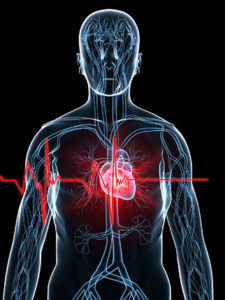
According to a study published in JAMA Cardiology, among those 18–55 years, more than half of women and just under half of men had sexual dysfunction in the year after a myocardial infarction. However, the study also showed that despite this high prevalence of sexual function problems, few study participants reported having any conversation with a physician about resuming sex after a myocardial infarction.
Stacy Tessler Lindau (University of Chicago, USA) and colleagues analysed data from VIRGO (Variation in recovery: role of gender on outcomes of young acute myocardial infarction patients)—a multicentre study of US and Spanish patients (age 18 to 55 years) designed to investigate differences between women and men in trajectories of functional recovery, including sexual activity and function, in the year after an acute myocardial infarction. Data from VIRGO were assessed at baseline, one month and one year. Participants were from US (103) and Spanish (24) hospitals.
Of the 2,802 patients included in the analysis, 1,889 were women (67%); median age was 49 years. At all-time points, 40% of women and 55% of men were sexually active. Among people who were active at baseline, men were more likely than women to have resumed sexual activity by one month (64% vs. 55%) and by one year (94% vs. 91%) after an acute myocardial infarction. Among people who were sexually active before and after acute myocardial infarction, women were less likely than men to report no sexual function problems in the year after the event (40% vs. 55%). Additionally, more women than men (42% vs. 31%) with no baseline sexual problems developed one or more incident problems in the year after the acute myocardial infarction.
At one year, the most prevalent sexual problems were lack of interest (40%) and trouble lubricating (22%) among women and erectile difficulties (22%) and lack of interest (19%) among men. Those who had not communicated with a physician about sex in the first month after acute myocardial infarction were more likely to delay resuming sex. In both countries, women were less likely to receive counselling about resuming sex at any time in the year after acute myocardial infarction (27% vs. 41% for men). Higher stress levels and having diabetes were significant indicators of the probability of loss of sexual activity in the year after the acute myocardial infarction.
Lindau et al comment: “Patients want to know what level of sexual function to expect during recovery from acute myocardial infarction. Our findings can be used to expand counselling and care guidelines to include recommendations for advising patients on what to expect in terms of post-acute myocardial infarction sexual activity and function. Attention to modifiable risk factors and improved physician counselling may be important levers for improving sexual function outcomes for young women and men after acute myocardial infarction.”
For more information about post myocardial infarctioncounselling, read: The role of psychological support after a myocardial infarction











